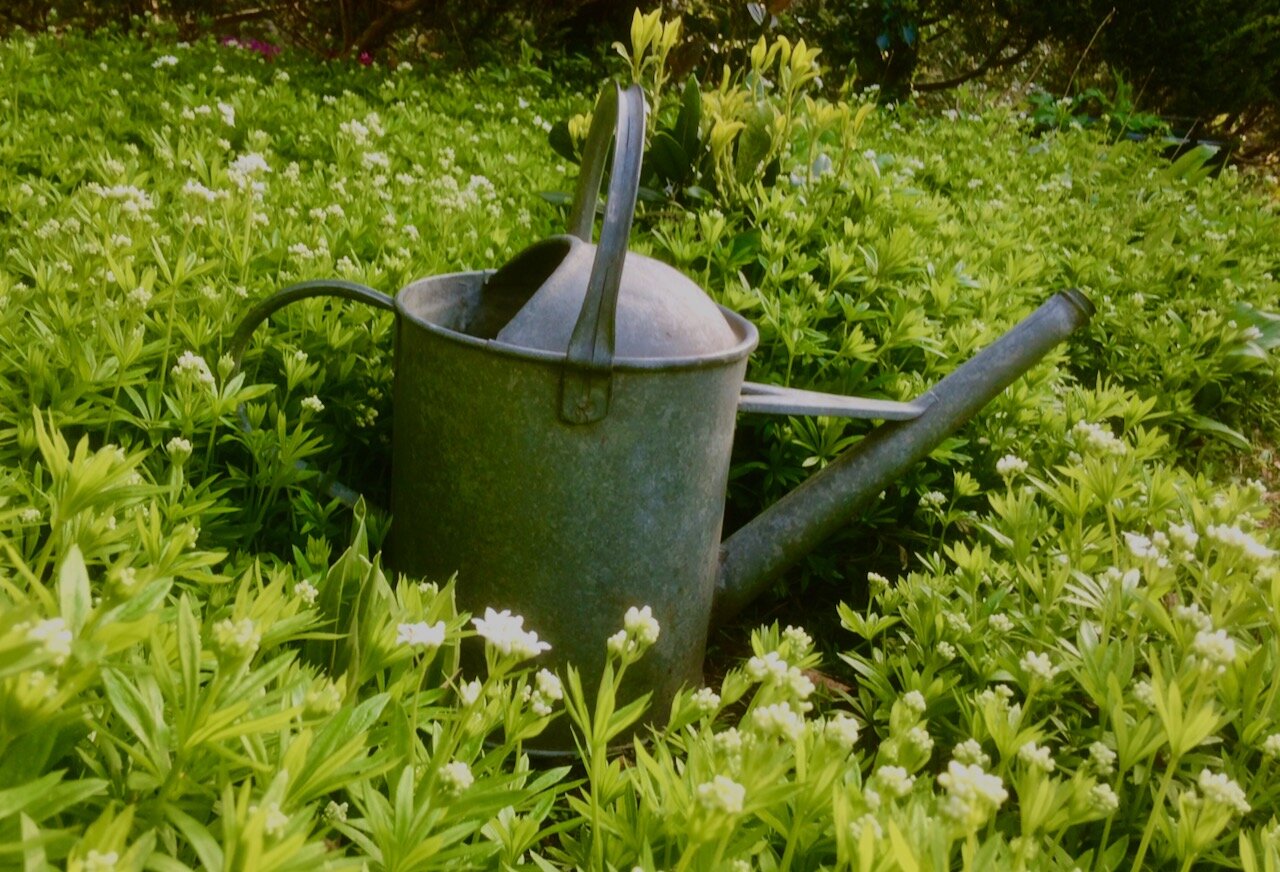Water: help establish your new planted borders
Creating planting schemes that are sustainable is a goal we should all strive for, allowing our plants to cope with extremes of weather. However, newly planted plants even if carefully selected to withstand some drought will struggle in the first year if they are not watered during times of dry weather, especially if it is windy - a bad combination for plants and one that we in the West of Scotland have experienced over the last month. The wind in particular will strip water from the plant and as they have not yet established their root system at the same time as drying the surface of any bare soil.
So how can you help your new plants get established?
WATER. Do not let the water levels in the soil around your newly planted plants get too dry. First, water them in on planting and then give your newly plants a good soaking once a week during dry weather, especially if it is also windy, to prevent the plants getting stressed.
Apart from preventing immediate stress, watering will also help the plants to establish a good root system, encouraging them to send their roots deep. In the long run, it will be these deep roots that will help bring your sustainable planting scheme to fruition. Conversely, light watering will only encourage surface roots, which will leave your plants susceptible to drought in the future.
When watering, use a hose or watering can to apply the water directly to the base of the plant.
MULCH. Add a thick (at least 5 cm) mulch of compost, composted bark or gravel, depending on your scheme, to keep the water in and protect the bare soil from drying out.
REMOVE UNWANTED PLANTS aka WEEDS. Borders prepared well and mulched directly after planting should mean that weeds and therefore weeding will not be an arduous task. However, perennial weeds in particular can still pop up from a small bit of root that is easily missed. Weeds are naturally plants and will use available water. By removing them, you are not wasting any water on the growth of the wrong plants!
Taking care with your newly planted borders - during the first year especially - will reap rewards in years to come.
How to establish plants in containers
Containers are not really a sustainable method of planting, but they can add to a design if you are prepared to look after the plants. Watering, mulching and weeding should all be applied to plants in containers, whether newly planted or otherwise. They will likely need daily watering, depending on the size of the container, to stop them drying out during dry weather, especially if windy. Using large sized containers holds larger volumes of compost-enriched soil that will take longer to dry out.
Grouping containers can increase humidity levels between them reducing the need for watering. Mulching the top of the soil in the containers with a thick layer of composted bark or gravel will also reduce evaporation from the soil surface and keep roots near the surface cooler, reducing stress. It will also minimise weed germination allowing any available water to go to the plants you want.

